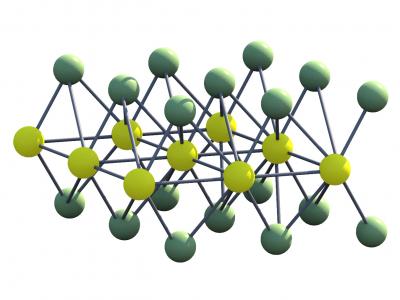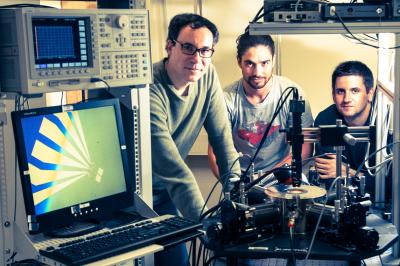
Graphene may have led the way for engineering with ultrathin materials, but other materials are now taking their place in the sun. Researchers in Austria have found that an atomically thin materials, tungsten diselenide (WSe2), may have great potential in solar cells which could be made transparent and even flexible.
Although graphene — single-layer carbon — has interesting properties for electronics, including very high conductivity, the energy levels of its non-binding electrons mean that it isn’t well suited for solar cells: it works well as a light detector, but no so well as a converter of contant solar irradiation into useful electric current. But according to Thomas Mueller and colleagues at the Vienna University of Technology, tungsten diselenide, whose structure consists of a flat plane of tungsten atoms connected by selenium atoms above and below the plane, fits the bill even better, as they explain in a paper in Nature Nanotechnology.
WSe2 is transparent, letting through 95 per cent of visible light, but it transforms a tenth of the remaining 5 per cent – a twentieth of the total incident energy — into electrical power. Stacking layers increases the efficiency, although it also reduces the transparency. ‘We are envisioning solar cell layers on glass facades which let part of the light into the building while at the same time creating electricity,’ Mueller said.

The material is crystalline, which gives it stability, unlike organic photoelectric materials which have also been proposed for transparent solar cells, but which tend to be degraded by the ultraviolet portion of sunlight. This crystallinity persists even when the film is flexed, making WSe2 a possible material for flexible display screens, the team claims. Research on WSe2 is also underway at MIT and the University of Washington.




Red Bull makes hydrogen fuel cell play with AVL
Formula 1 is an anachronistic anomaly where its only cutting edge is in engine development. The rules prohibit any real innovation and there would be...